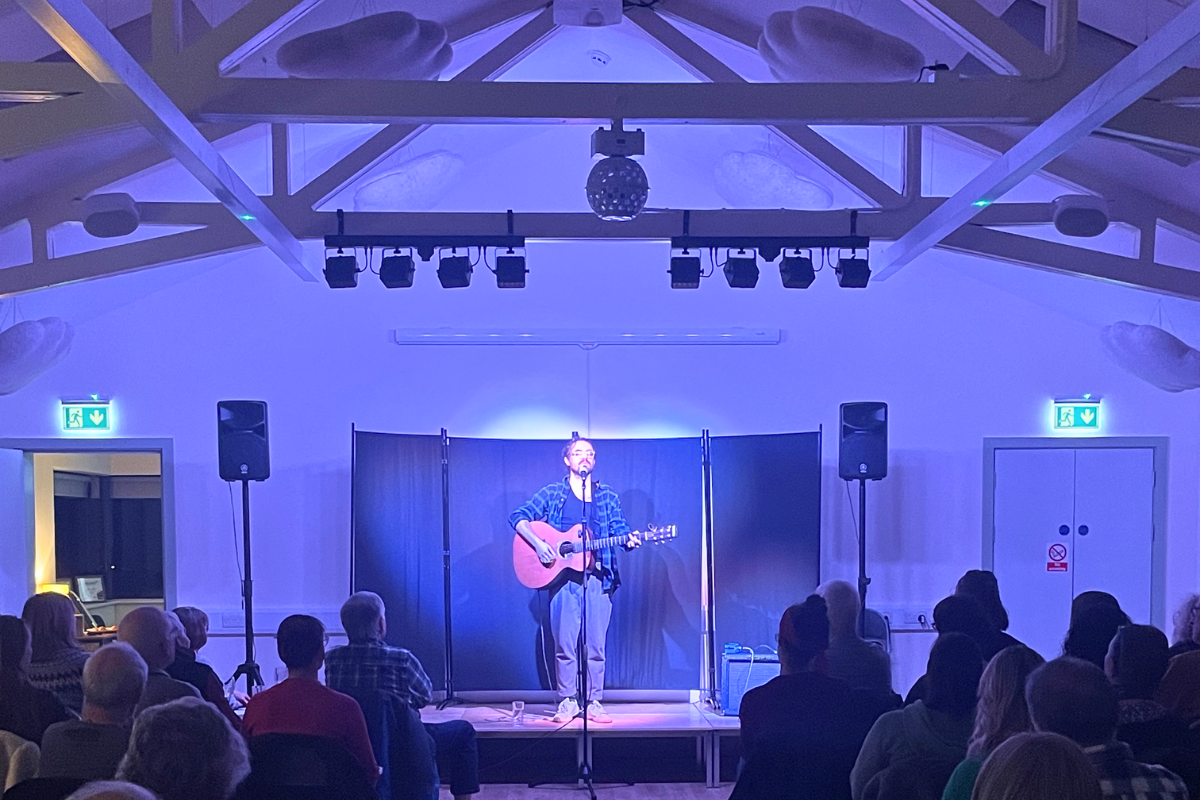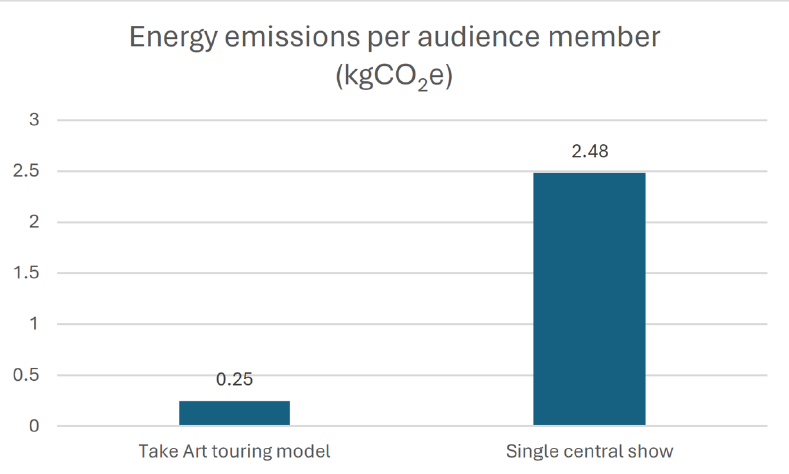
Blair Dunlop plays at Holford and District Village Hall, which is powered by an air source heat pump
Photo: Take Art
Small-scale rural touring could lower audience travel emissions
The study found that emissions produced by venues on a rural tour were 90% lower than a single larger show at an urban venue, when normalised for the same number of attendees.
Performing arts productions that tour smaller rural venues can produce lower audience travel emissions when compared with a single larger-capacity show in a more urbanised setting, a new report has found.
Commissioned by Take Art in partnership with the National Rural Touring Forum, the study by Julie’s Bicycle analysed a four-date tour of solo musician Blair Dunlop in February 2024.
It recorded the production’s carbon emissions by collecting audience travel data via surveys and venue energy usage via metre readings.
For comparison, researchers used existing audience travel and energy data from a representative venue in a more urbanised location, normalised to a capacity of 245 attendees.
The analysis showed that for the same number of attendees, total emissions from audience travel on the tour were 428.28 kgCO₂e – 20% lower than for the single larger, urban show.
Car travel accounted for over 95% of emissions for the tour due to the fewer public transport options outside of urban areas. Nearly four-fifths of attendees across the rural shows travelled by car, with an average distance of 49 miles.
The representative urban show attracted audiences from further afield, with a 25% increase in the total distances travelled compared with the rural shows.
In total, 20% of audience members walked to the four rural performances. Take Art claims this figure is lower than average for rural locations, indicating that it normally expects around 40% of its attendees to travel to its productions on foot.
In its recommendations, the report suggests that rural producers should encourage more active modes of transport by communicating safe walking and cycling routes, providing safe bike storage on-site, and offering incentives for active travel, such as discounts and exclusive events.
The study does not account for the touring artist’s travel but notes that Dunlop travelled in one petrol vehicle, carpooled with a stage manager, and stayed in local, hosted accommodation.

Analysis of emissions produced by venues on the rural tour showed a 90% reduction compared to the representative larger central venue, with 0.25 kgCO₂e produced.
The disparity reflects that the community venues selected for the tour have installed renewable energy systems that help to reduce emissions, as their size makes it more feasible for them to achieve all energy demand through small-scale and cheap renewable energy supply.
Researchers also suggest that a larger, central venue requires additional energy for ventilation, heating, cooling, and lighting, while rural venues are also open for a shorter period of time for each show, reducing emissions.
Cultural and wellbeing benefits
Deborah Clarke of Action with Communities in Rural England said that her organisation was impressed with the findings.
“We have always supported rural touring for the cultural and wellbeing benefits it brings to what can be isolated communities,” said Clarke.
“That reductions in travel and energy use are significant in village halls when compared with more urbanised venues is great news. We will continue to promote rural touring and to encourage funders to assist village halls to install energy saving measures.”
Danny Pedler, Take Art’s director of rural touring, said he hoped the report could help illustrate the contribution rural touring can make to a sustainable touring ecology. He added that the company intends to work with Julie’s Bicycle to carry out a large-scale study.
Join the Discussion
You must be logged in to post a comment.